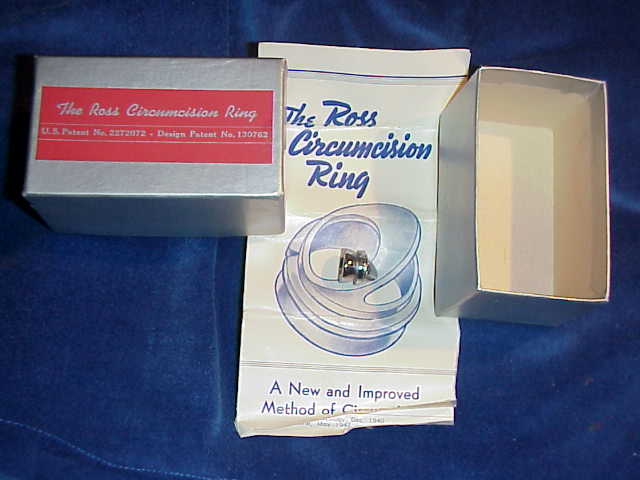The utility patent (2,272,072) was filed May 22, 1939 and granted February 3, 1942. This device is similar in principle to the Hollister company’s later invention, the
Plastibell, but it is made of metal. There is a notch in the skirt of the bell to clear the frenulum and a small handle set at an angle to the axis of the device. The reason for this is that the corona is at an angle to the shaft of the penis; putting the handle in line with the shaft is supposed to put the ring at the same angle as the corona, resulting in removal of the correct amount of skin all around.
The device is intended to be left in place for 24 to 72 hours, until the wound is closed and there is no danger of adhesions to the glans. There is a groove to guide cutting off the foreskin distal to the string; the instructions suggest this cutting is optional but leaving the whole prepuce to necrotise
in situ seems inadvisable.
It has been superseded by the Hollister Plastibell, no doubt because the Plastibell is disposable and can be sent home with the patient.
Ross also sold the rings individually:


